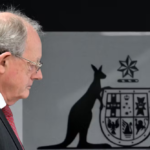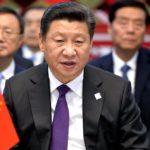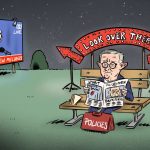In the early 1930s, psychologist Jacob Moreno made a diagram showing the relationships between the boys and girls in the first grade of a New York primary school. The boys were friends with other boys, and the girls were friends with other girls. The exception was a single boy who liked a girl – but she didn’t feel the same way about him.
The social map of a grade one class was made of circles – hubs of boys or girls – joined by spokes. Moreno called the map a ‘sociogram’. It was a forerunner of what’s now known as network science, a discipline that studies the relationships between people (a social network), but has also been applied to computers, biology, telecommunications and economics.
Network science demonstrates how members of a network are related, and how they influence each other. Yale network scientist Nicholas Christakis began life as a GP working on Chicago’s South Side. He noticed that poverty and sickness, for instance, often appeared in clusters – that misery itself could be infectious. In later studies, he found that happiness (and obesity) could be contagious, too.
“For me, social networks are like the eye,” he said. “They are incredibly complex and beautiful, and looking at them raises the question of why they exist and why they come to pass.”
Identifying the key player
Monash Professor of Economics Yves Zenou also studies how social networks influence behaviour.
He’s developed the theory of the ‘key player’ – the idea that some people (or entities) in a network are much more influential than others. When Professor Zenou lived in Sweden, his method helped police identify key players in a criminal network, a strategy that reduced crime by up to 30 per cent.

“A criminal network is when you and I can commit crime together, for example – or we help each other in some dimension,” he says. “I developed an algorithm in order to say, ‘OK, if you have a network of criminals, which person do you want to target, so that once he is removed from the network it will reduce the most crime’?”
The key player isn’t necessarily the person who commits the most crime, he explains, but the one who’s most connected to others, and particularly to people who are central to the network.
“Once he is removed there is a huge contagion effect,” Professor Zenou explains. “His direct links are extremely affected, and the whole network can be affected.”
An adaptable concept
The key player concept can be adapted for many contexts. In times of financial crisis, for instance, it can help governments identify which banks to bail out to avoid a system collapse, or which businesses to support to provide maximum economic benefit. The Obama administration’s decision to bail out General Motors and Chrysler “was very important”, he says, because the auto manufacturers were key players.
“If a car company defaults, it cannot pay the investors. It cannot pay the people it owes money to. All the people who are working in the company will not work. Their families are affected. There is so much impact on the community. When you have a network perspective, you can see all these links and defaults.”
A network can take many forms. “It’s any space you can think of – a social space, a geographical space, a working space,” he says. “Any network – power grids, cancer cells … there are many different kinds – have this hub and spoke structure. You can target them strategically to stop contagion.”
“You want to target firms that will spread their knowledge to other firms.”
And you can also use them to identify how to render assistance most effectively.
Most recently, Professor Zenou has used his method to identify which American firms should receive research and development assistance from the government.
“You want to target firms that will spread their knowledge to other firms,” he says.
And, in Africa, his method identified key areas that were most likely to spread economic growth.
Also, in India, when the key players in small communities took out micro loans, for instance, they demonstrated an effective way to develop their business or farm over the long term. An allied aim was to model an alternative to the commonplace – and disastrous – practice of obtaining money from lenders who charged exorbitant interest rates, but who provided immediate relief. The technique proved to be successful.
In some instances, networks can be influenced by identifying people on the margins, and providing them with an alternative point of view.
“If I wanted to stop white supremacists, for instance, then it’s difficult,” Professor Zenou says, “because the most influential guy is also the most extreme guy. So in that case I would do the opposite of the key player strategy.
“You want to take out people who are tangential, who are on the fringe; those people who are in the network but who aren’t convinced. You can identify them also with the algorithm.”
This article was published by Lens.














